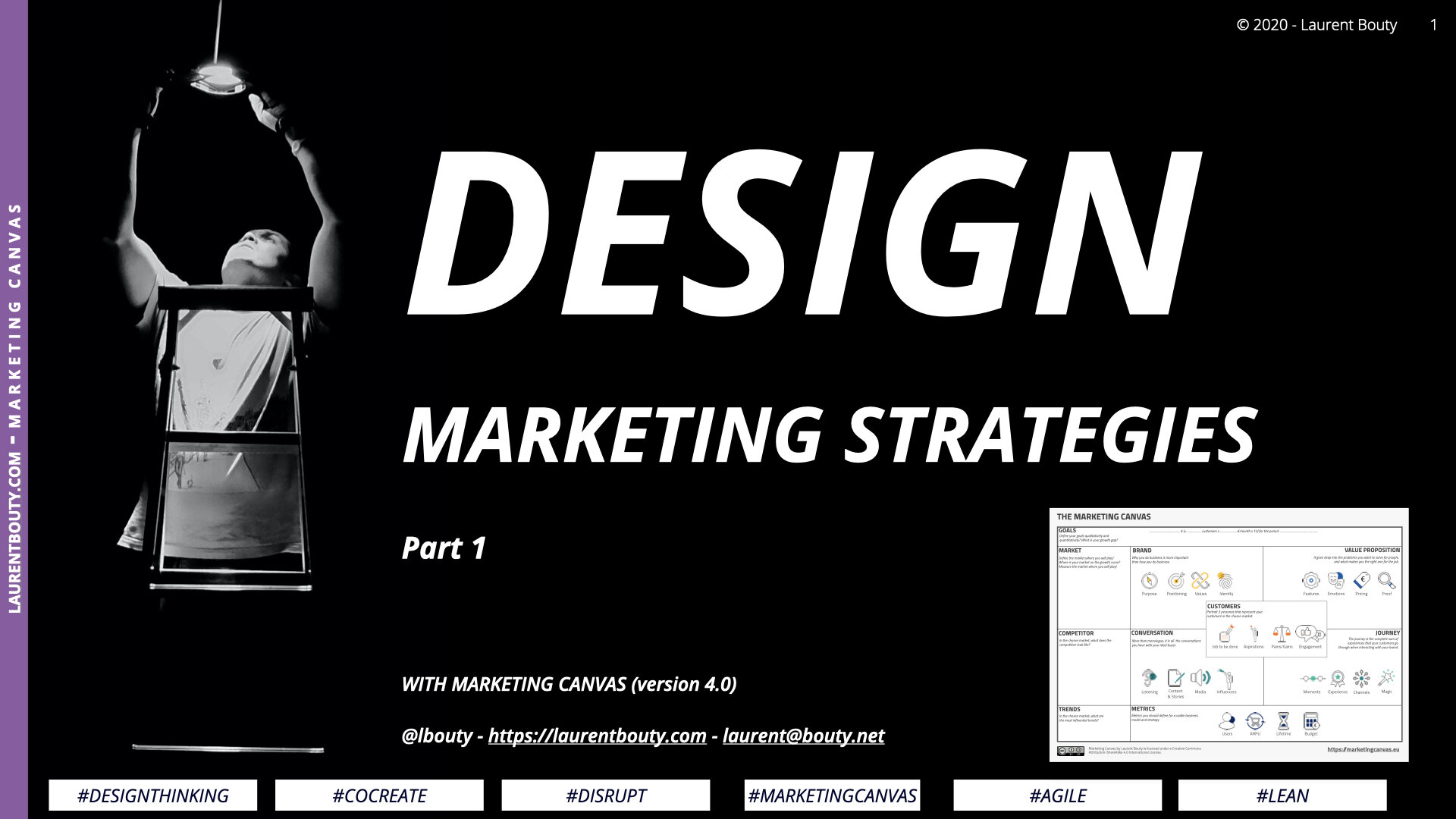Last update: 15/06/2023
In a nutshell
In today's digitally connected world, the importance of listening to customers has never been more paramount. This comprehensive guide dives deep into the process of establishing an effective Voice of Customer (VoC) system. It lays the groundwork for understanding why listening is crucial, how to listen effectively, and how to translate customer feedback into actionable insights. The guide also offers tips for choosing the right tools for the task, provides a step-by-step assessment for evaluating your listening methods, and even includes a real-world case study to demonstrate these principles in action. In a world where customer satisfaction drives business success, this guide will arm you with the knowledge you need to ensure that your customers always feel heard.
In the Marketing Canvas
The Marketing Canvas is a powerful tool for entrepreneurs and non-marketers to build a robust marketing strategy. It consists of six meta-dimensions, each with four sub-dimensions, for a total of 24 sub-dimensions defining your Marketing Strategy. One of these sub-dimensions is LISTENING TO, which falls under the CONVERSATION meta-category
Defining LISTENING TO
"Listening to the needs of your customers isn’t an optional exercise; it’s mandatory. Even if you don’t intend to differentiate on customer experience (and you’re in a small minority if so), the value of listening to customers is real, measurable, and immediate." CMO.com
The Marketing Canvas, a groundbreaking conceptual framework, includes a crucial element called "Conversation". This term is deliberately used to represent the paradigm shift from traditional, one-way communication to a more dynamic, two-way dialogue. At the heart of this Conversation is "Listening To", a sub-dimension that emphasizes the importance of actively tuning into the voice of your customers (VoC).
“Listening to the needs of your customers isn’t an optional exercise; it’s mandatory. Even if you don’t intend to differentiate on customer experience (and you’re in a small minority if so), the value of listening to customers is real, measurable, and immediate.” CMO.com
VoC is a method businesses use to capture the expectations, needs, and sentiments of their customers. It encapsulates the entirety of customers' feedback about a business, product, or service, providing a holistic view of the brand from the customer's perspective. It assists companies in identifying and understanding the gap between customer expectations and their actual experience.
Business, akin to a romantic relationship, relies heavily on mutual understanding. In a scenario where one person dominates the conversation without genuinely listening to their partner, dissatisfaction will inevitably breed. Businesses should adopt a similar attitude, attentively listening to customers even when they don't have an immediate problem. Successful businesses go beyond mere listening; they strive to understand their customers.
Understanding customers is an art and a science. It involves careful selection of the audience to be heard and the method of listening. Misinterpretation or ignorance of feedback can lead even the most astute businesses astray. Different customer feedback channels have different strengths and weaknesses, and understanding these is crucial to effective listening.
A business needs to care about customers' emotions and feelings and show genuine empathy. It's not about simply collecting feedback, but about understanding the emotions and sentiments behind them. This is the key to capturing valuable insights that can contribute to product-market fit. Without a systematic program that listens to customers, leverages this information, and monitors the results, achieving business goals becomes increasingly challenging.
But listening is not the same as understanding. How you listen, and to whom you listen, is critical. Even a smart, high-end business can be led astray by misunderstanding the strengths and weaknesses of different customer feedback channels. HBR[2]
Tools for LISTENING TO
In our digitally advanced world, businesses have access to a multitude of tools to facilitate customer listening. Social media listening tools like Brandwatch or Sprout Social, survey tools like SurveyMonkey or Qualtrics, and customer review platforms like Trustpilot, among others, offer invaluable insights into customer sentiment.
Advanced technologies like artificial intelligence and machine learning have given birth to sentiment analysis tools that can interpret customer sentiments from text data, even from unstructured sources like social media posts or customer reviews. These tools categorize sentiments into positive, negative, or neutral, providing an overall picture of how customers feel about your business.
Listening isn't confined to digital platforms. Direct conversations, focus groups, interviews, and in-person observations are traditional yet effective tools for understanding customers at a deeper level. Each tool and technique should be carefully chosen based on the context and requirements of the business.
Translating LISTENING TO into Action
Listening to customers is fruitless unless the gathered information is analyzed and translated into meaningful actions. The insights derived from listening to customers should inform decision-making processes, shaping strategies for marketing, customer experience, product development, and other areas.
For instance, if a significant number of customers express dissatisfaction with a particular feature of a product, businesses should consider revamping that feature. If customers appreciate a certain aspect of the service, efforts should be made to enhance that part of the customer experience.
Actions based on listening should not just aim to fix problems but also to innovate and exceed customer expectations. In essence, customer feedback should act as a springboard for creativity and innovation, pushing the company to excel and differentiate itself in the market.
Evaluation and Improvement
Is the way you are currently Listening to your users helping you achieve your goals?
Are your current Listening methods helping you reach your goals?
For a comprehensive evaluation, rate your agreement with the following statements on a scale from -3 (completely disagree) to +3 (completely agree):
You have set up a VOC system that captures everything customers are saying about your brand and your value proposition.
Your entire VOC process is data-driven, and at no point are you making any assumptions.
Your VOC process is based on an in-depth knowledge of your user's journey and customer lifecycle.
You are using several techniques in tandem to ensure you're extracting the maximum value from your research.
The scores you assign will give a tangible measure of how effectively you're "listening to" your customers. Low scores indicate areas for improvement.
Green clean use case
Green Clean, an environmentally friendly cleaning company, presents an excellent case study of effective "listening to" in action. Through various channels, they captured customer sentiments about the harsh chemicals typically used in cleaning products. They translated these insights into action, developing eco-friendly cleaning products that not only met the cleaning needs of their customers but also catered to their desire for environmental sustainability. By taking customer feedback seriously and translating it into action, Green Clean carved out a unique space for itself in the crowded cleaning product market.
Conclusion
Active listening to customers, a component of the Marketing Canvas's Conversation category, is indispensable in today's customer-centric business landscape. By integrating VoC into their strategies, businesses can better understand their customers' needs and expectations, enabling them to deliver more effective, personalized experiences. The Green Clean example demonstrates how understanding and acting on customer feedback can lead to unique product development and a solid market position. With the right tools and commitment, businesses can transform listening into a powerful catalyst for growth and innovation.
Sources
Hubspot, 12 Voice of the Customer Methodologies To Generate a Goldmine of Customer Feedback, https://blog.hubspot.com/service/voice-of-the-customer-methodologies
Harvard Business Review, 2015, Everyone Says They Listen to Their Customers—Here’s How to Really Do It, https://hbr.org/2015/10/everyone-says-they-listen-to-their-customers-heres-how-to-really-do-it
McKinsey, Are you really listening to what your customers are saying?, https://www.mckinsey.com/business-functions/operations/our-insights/are-you-really-listening-to-what-your-customers-are-saying
Futurelab, Your VoC Programme is underperforming - and you know it, https://www.futurelab.net/slide/your-voc-programme-underperforming-and-you-know-it
More on the Marketing Canvas
Marketing Canvas by Laurent Bouty






































